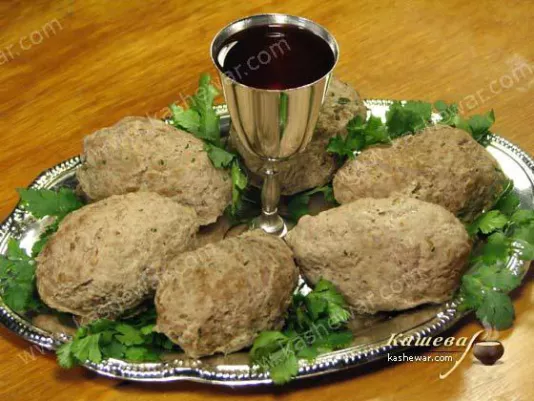New Potato and Onion Salad
New potato and onion salad – Armenian cuisine recipe, boiled new potatoes with green onions and vegetables.

Armenian cuisine has a millennia-old history and is considered one of the oldest in the Caucasus region. It was shaped by natural conditions, mountain climate, traditions of livestock and farming, and cultural exchange with neighboring peoples. The diet was based on simple ingredients: meat, wheat, vegetables, herbs, and dairy products, but through special cooking methods they were transformed into refined and flavorful dishes. Notable features include the use of the tandoor, drying and smoking of products, long stewing, and the generous use of spices and herbs. Armenians passed down recipes and cooking skills from generation to generation, infusing each dish not only with flavor but with cultural meaning. Each region of Armenia has its own distinctive features, but all are united by a shared philosophy – reverence for nature, tradition, and the home hearth.
Armenia's culinary tradition offers a wide variety of dishes that surprise not only with their taste but also with preparation techniques. Among the most popular are khash, tolma, khorovats, basturma, and gata. Many recipes involve the use of meat (especially lamb and beef), legumes, grains, vegetables, and always spices – such as thyme, basil, coriander, and sumac. Dishes are often prepared in large portions, generously dressed with butter or matsun, and served with lavash, which serves as both bread and spoon. Seasonality plays an important role: in winter – more hearty meat-based meals, in summer – lighter dishes made from vegetables, cheese, and herbs. Many Armenian recipes involve pre-treatment of ingredients – marinating, drying, fermenting. This adds a special aroma and allows dishes to be stored for a long time.
One of the most distinctive features of Armenian cuisine is the use of the tandoor – a clay oven used to bake lavash and roast meat and vegetables. Lavash – thin unleavened bread – is a national symbol of Armenia and is inscribed on the UNESCO Intangible Cultural Heritage list. Another traditional technique is long stewing of meat and vegetables in covered pots, which helps retain the dish’s juiciness and aroma. Smoking plays an important role in Armenian cooking – both as a way to preserve food and to give it a distinct taste. Many dishes are prepared over open flame or in clay cookware. Fermentation is also important: pickled cabbage, matsun (a fermented dairy drink), and marinated vegetables are present in many dishes and often served as appetizers. Armenians have also preserved ancient preservation methods such as drying fruits, meat (basturma), and vegetables.
Armenia's natural environment contributed to the development of a cuisine rich in natural products. Meat – especially lamb and beef – forms the basis of most hot dishes. Grains like wheat, bulgur, and buckwheat are widely used for making porridge, soups, and dolma fillings. Legumes such as chickpeas, lentils, and beans are also important. Dairy products – cheese, matsun, and tan – are staples of almost every meal. Among vegetables, eggplant, peppers, tomatoes, onions, and garlic prevail. Wild herbs like sorrel, thyme, mint, and basil are often used. Spices play a major role in Armenian cuisine, though they are used in moderation to enhance rather than overpower the main ingredient. Dried fruits, particularly apricots, are worth noting – they are used not only in desserts but also in meat dishes to add a sweet note.
Signature Armenian dishes include tolma (stuffed grape leaves or vegetables), khorovats (grilled meat skewers), khash (a rich broth made from beef feet, traditionally served with garlic, radish, and lavash), and basturma (spiced dried meat). Soups like spas – a fermented dairy soup with wheat – are also popular. Among baked goods, there is gata (sweet pastry with butter), samples of thin homemade noodles, and pies with cheese and herbs. Armenian cuisine is known for its combinations of meat with fermented dairy or sweet ingredients, creating complex and refined flavor profiles. Festivities and rituals play an important role in food culture, with special dishes prepared for each occasion – such as pasul (holiday wheat porridge), New Year’s gata, and Easter stuffed eggs. All of this forms a living gastronomic heritage.
Today, Armenian cuisine is being reinterpreted within the framework of contemporary gastronomic trends. Young chefs in Yerevan and the diaspora experiment with the presentation of traditional dishes without changing their essence. For example, khash is served in mini-portions with creative additions, while basturma appears as appetizers paired with local cheeses. Armenian restaurants are emerging around the world – from Paris to Los Angeles – promoting authentic recipes through modern interpretations. At the same time, traditional cooking techniques are preserved in the home kitchens of the Armenian diaspora, ensuring that culinary identity is passed down through generations. Interest in Armenian cuisine is also growing due to its natural ingredients, seasonality, high nutritional value, and eco-friendliness. This makes it appealing not only to gourmets but also to those seeking honest, authentic flavors.